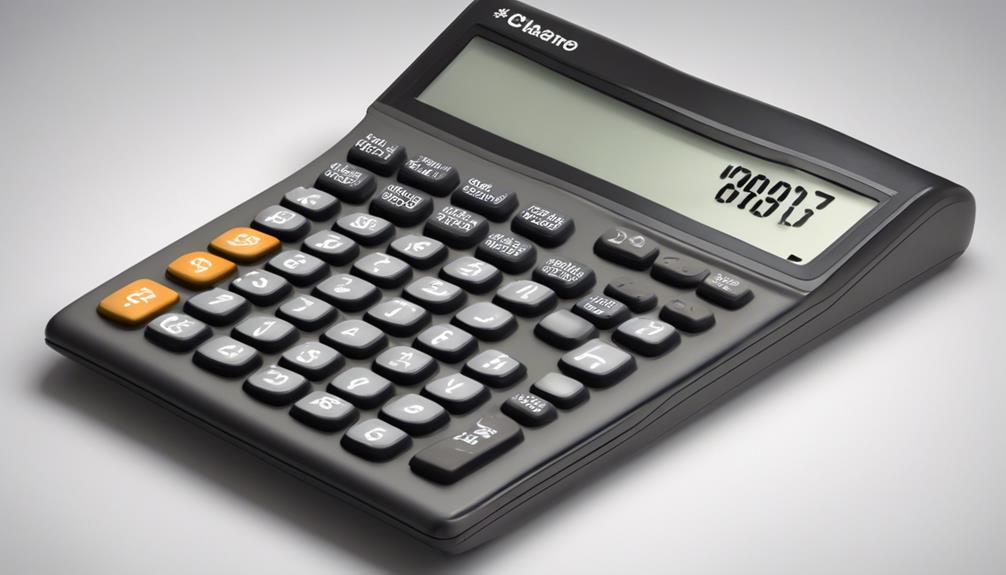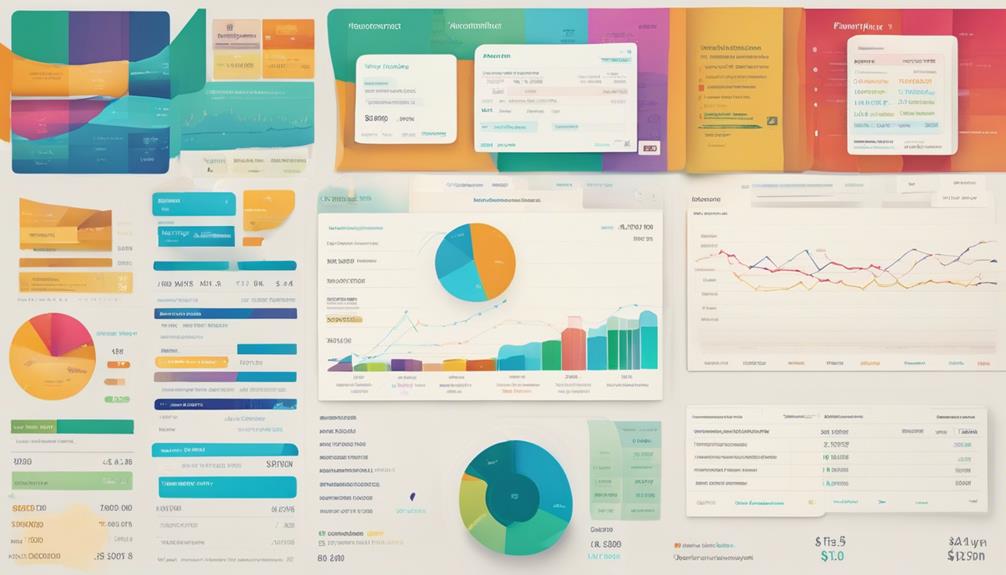Understanding payment processing statements is essential for businesses to effectively manage their financial operations. These statements detail different elements like interchange fees from card issuers and banks, assessment fees from card networks, processor markup fees, and fixed fees for overhead expenses. Calculating the effective rate by dividing total processing fees by transaction volume is crucial for tracking expenses and identifying possible savings opportunities. Negotiating fee reductions, leveraging industry expertise, and exploring different pricing structures are key strategies for optimizing payment processing costs.
By grasping these concepts, businesses can navigate statement complexities for financial optimization and cost control.
Key Takeaways
- Payment processing statements detail fees and charges.
- Statements show interchange, assessment, and processor fees.
- Understanding statement breakdown aids in cost control.
- Explore discounts and negotiate for savings.
- Regularly review statements for optimization opportunities.
Components of Payment Processing Fees
When assessing the components of payment processing fees, we find that they consist of interchange fees, assessment fees, processor markup fees, and flat fees. Interchange fees are determined by card issuers and banks based on the type of transaction and associated risk factors. These fees are non-negotiable and are a significant portion of the total processing cost.
Assessment fees, charged by card networks such as Visa and Mastercard, play a role in generating revenue for these networks. Processor markup fees are added by the payment processor for their services in facilitating transactions. Negotiating these fees can lead to potential savings for businesses.
Flat fees encompass various fixed costs like equipment rentals and PCI compliance fees. Understanding these components is crucial for businesses to have a comprehensive grasp of their payment processing expenses and to make informed decisions when selecting payment processors.
Calculating the Effective Rate

Let's explore how we calculate the effective rate to understand the overall cost of processing payments more efficiently.
- Understanding the Math: The effective rate is derived by dividing the total processing fees by the total transaction volume, revealing the percentage representing the cost of processing payments.
- Discovering Savings: Monitoring the effective rate regularly uncovers potential cost-saving opportunities, enabling merchants to optimize their payment processing expenses.
- Indicators for Action: High effective rates may signal the need to negotiate fees with the processor, emphasizing the importance of actively managing expenses to control costs.
Negotiating Fee Reduction
When looking to reduce fees, it's essential to have a solid strategy in place. Negotiation tips can help guide us through the process and maximize our chances of success.
Fee Reduction Strategies
Negotiating fee reductions with payment processors can result in substantial cost savings for businesses. To achieve this, consider the following strategies:
- Leverage Industry Insights: Understand your processing volume and industry benchmarks to strengthen your negotiation position.
- Explore Discounts: Payment processors may be willing to reduce markup fees or offer volume discounts based on your negotiation skills.
- Competitive Research: Research competitor rates to have a comparative advantage during fee negotiations.
Negotiation Tips
To enhance our negotiation effectiveness for fee reductions, we should prioritize understanding our processing volume and industry benchmarks. By knowing our transaction numbers and comparing them to industry standards, we can leverage this data to negotiate better rates with our payment processor.
Presenting competitive offers or industry norms during negotiations can also bolster our position for fee reductions. Regularly scrutinizing our processing statements enables us to pinpoint areas where fees can be negotiated or reduced.
Effective negotiation strategies involve utilizing long-standing relationships, exploring different pricing structures, and demanding transparency in fee breakdowns. Through these tactics, we can strive for more favorable fee arrangements with our payment processor, ultimately leading to significant cost savings for our business.
Pricing Structures Overview

When considering payment processing, it's crucial to grasp the diverse pricing structures available.
By understanding the breakdown of fee types, comparing costs, and seeking transparency in pricing, merchants can make informed decisions.
These points serve as a foundation for unraveling the complexities of payment processing fees and optimizing financial outcomes.
Fee Types Breakdown
Understanding the breakdown of fee types in payment processing pricing structures is essential for businesses seeking to optimize their costs effectively. Here are key points to consider:
- Interchange fees, determined by card issuers, establish the base cost of transactions.
- Assessments are extra charges benefiting credit card companies.
- Processor markup fees, negotiable with your payment processor, impact overall costs significantly.
Negotiating these fees is vital for reducing expenses and enhancing pricing structures.
Flat fees, which may encompass equipment rentals and PCI compliance fees, should be carefully reviewed within merchant statements. By grasping these fee types, businesses can strategically manage their credit card processing fees and work towards cost reduction.
Cost Comparison Methods
How do different pricing structures impact businesses' payment processing costs and financial planning strategies?
Understanding the various pricing models like flat rate pricing, tiered pricing, and interchange plus pricing is crucial for controlling expenses.
Flat rate pricing offers simplicity with a consistent fee for all transactions, easing cost calculations on credit card processing statements.
Tiered pricing divides transactions into fee tiers based on card types and processing criteria, making it important to analyze which tier your transactions fall into.
Interchange plus pricing breaks down fees transparently, including interchange, assessment, and markup components, aiding in negotiating better rates.
Opting for the right pricing model not only affects your processing costs but also influences financial planning strategies, ensuring PCI compliance and cost efficiency in merchant processing statements.
Transparency in Pricing
Exploring the various pricing structures in payment processing provides merchants with valuable insights into managing costs and optimizing financial strategies. When it comes to pricing structures, understanding the details is crucial for businesses looking to control expenses effectively.
Here are key points to consider:
- Interchange Plus Pricing: Offers transparency by breaking down interchange, assessment, and markup fees.
- Tiered Pricing: Categorizes transactions into qualified, mid-qualified, and non-qualified tiers, each with varying fees.
- Flat Rate Pricing: Simplifies cost calculations by charging a consistent fee for all transactions.
Understanding Interchange Fees

Card networks establish interchange fees, which are essential costs that support the processing of transactions and are paid to card-issuing banks. These fees, being non-negotiable, play a crucial role in covering the transaction costs associated with card payments. Interchange fees are not fixed; they vary based on several factors such as the type of card used, transaction volume, and the industry in which the transaction takes place. Understanding these fees is vital for managing costs related to credit card processing. In fact, interchange fees constitute a significant portion of the overall fees that merchants pay for processing card transactions.
| Factors Affecting Interchange Fees | Examples | Impact |
|---|---|---|
| Card Type | Visa, Mastercard, Amex | Different card types have varying interchange fee levels. |
| Transaction Volume | High volume vs. low volume | Higher volumes may lead to lower interchange fees. |
| Industry | Retail, E-commerce, Travel | Interchange fees differ based on the industry of the merchant. |
Optimizing Payment Processing

To enhance cost efficiency in payment processing, businesses must strategically analyze payment processing statements for potential optimizations. When reviewing your merchant processing statement, consider the following steps:
- Examine Transaction Costs: Analyze each transaction to transaction from your credit card processing statement. Divide the total amount paid by the number of transactions to determine the average processing rate.
- Understand Wholesale Costs: Differentiate between the wholesale or base cost and the monthly discount on your merchant processing statement. Knowing these costs can help negotiate a lower fee with your payment processing provider.
- Negotiate for Savings: Use the insights gained from reviewing your merchant statement to negotiate a lower fee with your payment processing provider. Understanding the components of your statement empowers you to optimize costs effectively. By taking control and actively engaging with your payment processing statement, you can unlock potential savings for your business.
Frequently Asked Questions
What Is a Payment Processing Statement?
A payment processing statement is a detailed record of transactions, fees, and chargebacks processed by a merchant. It helps us track financial activities, understand fee structures, and optimize our operations for informed decision-making and cost management.
How Do You Read Processing Statements?
When we read processing statements, we analyze transactions, fees, and chargebacks for insights into costs and revenue. Understanding these details helps us optimize pricing, identify errors, and improve financial planning for better business outcomes.
How Do You Explain Payment Processing?
Understanding payment processing involves handling card transactions efficiently through authorization, settlement, and funding processes. It confirms purchases, communicates results, tracks transactions, debits accounts, and deposits funds. Regularly reviewing statements and calculating rates is crucial for managing costs.
What Are the Stages of Payment Processing?
We confirm customer purchases, settle transactions, and fund accounts. Our processor validates results from card networks. The merchant's POS displays authorization status. These stages ensure efficient payment processing.
How Does Payment Processing Statement from Www.Pciapply.com Compare to General Payment Processing Statement?
The payment processing on pciapply statement provides a clear breakdown of fees, rates, and transactions, ensuring transparency for businesses. In comparison, a general payment processing statement may lack the detailed information necessary for merchants to fully understand their financial activity. The pciapply statement offers a more comprehensive and insightful view of payment processing.
Conclusion
As we navigate the complex world of payment processing, understanding the various fees and structures is crucial. By optimizing our payment processing, we can streamline our financial operations and maximize efficiency.
Just as a skilled architect carefully designs each element of a building to ensure stability and functionality, we must carefully analyze and optimize our payment processing to build a strong foundation for financial success.
Let's continue to educate ourselves and make informed decisions to achieve our goals.









